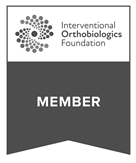C.A.R.E.N., our computer-assisted rehabilitation environment, provides us with tools to analyze and train patient movement for peak efficiency and optimal execution. The system taps into intrinsic feedback — the use of the patient’s kinesthetic sense that lets them “feel” movement through muscles, joints and the vestibular balance system.
Originally designed to rehab wounded soldiers with multiple traumas, C.A.R.E.N. lets us view joint angles, muscle forces and body symmetry in real time. The combination of sophisticated research grade software and hardware allows multiple feedback possibilities.
With its immersive environment and variety of feedback options, C.A.R.E.N. takes the boredom out of physical therapy while providing the therapist with important real time diagnostic movement data, enabling therapists to achieve goals that would be nearly impossible using tradition overground physical therapy.
In situations where things happen suddenly and unexpected the control through co-contractions is much more important than proprioception. This form of control happens by an instantaneous contraction of all surrounded muscles around the given joint. There is no time delay as there is no feedback of the nervous system needed. It is through the anatomical design and the intrinsic properties that the muscle-tendon units have a direct influence on one and another (all muscles tense and if one lengthens by the perturbation, the other automatically is influenced by it and shortens). This strategy can be trained an optimized over time by the right practice.





















































































